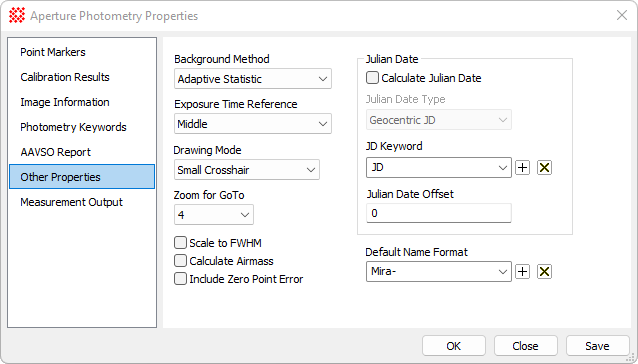|
This list box chooses the statistical method for
estimating the sky background from pixels in the annulus between
the outer two apertures.
Determining an accurate background is a key part
of making accurate photometric measurements. Contaminating pixels
from stars and bad pixels in the background annulus can impart a
bias to the background estimate based on background pixels.
Subtracting a biased background value from the object signal thus
creates a biased measurement of the object’s brightness. Hence, it
is best to choose a method appropriate to the degree of sample
contamination.
Mira provides several statistical methods for
estimating the background value. These vary in their ability to
compensate for contaminants in the background sample. From the most
impacted to least impacted by contaminating pixels, these options
are as follows:
Mean Statistic: This
is generally good for photometry in sparse fields where the
background annulus is free from contaminating stars and bad
pixels.
Median Statistic: This
method works well in fields where contaminants are a small fraction
of pixels in the background annulus. However, it is not recommended
for faint stars as the median yields an integer (whole-number)
value for the sample, thus reducing the accuracy of the background
measurement. As an extreme example, the median would truncate an
actual background value of 105.486 to 105.0.
Mode Statistic: This
statistic is good for rejecting minor contaminants from the
background annulus.
Adaptive Estimator:
This method uses a proprietary data rejection strategy to identify
the true background within a heavily contaminated sample. Since
this method rejects contaminating values from the statistical
estimate, it also reduces the number of pixels used in computing
the background.
|


